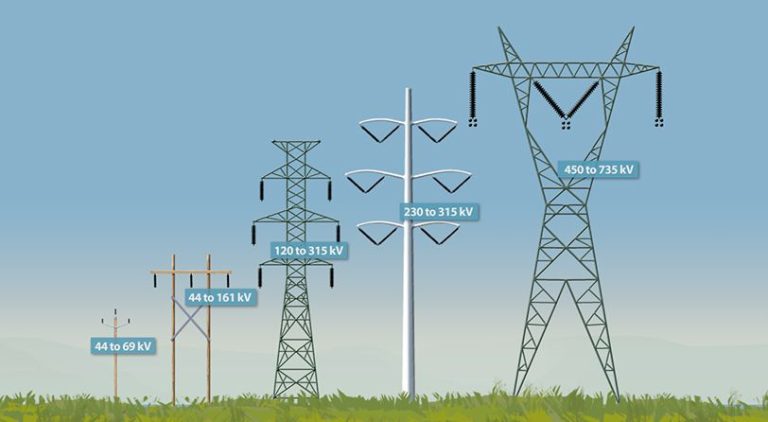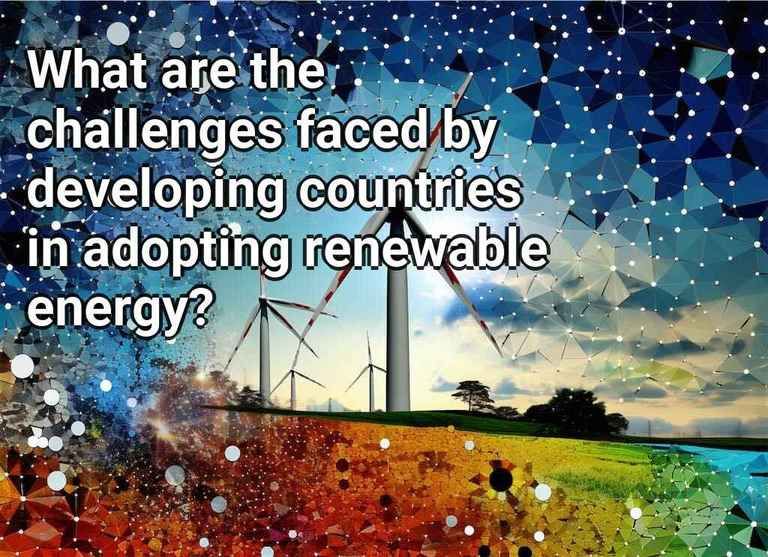What Represents Energy In Physics?
Definition of Energy
Energy is the ability to do work or produce heat. It is a quantitative property that is conserved, which means the total energy in a closed system remains constant. This is known as the law of conservation of energy.
Energy comes in many different forms. Some common forms include kinetic energy, potential energy, thermal energy, electromagnetic radiation, chemical energy, nuclear energy, and more. These forms can be converted and transferred between objects and systems. For example, chemical energy in gasoline can be converted into kinetic energy to move a car.
Energy is measured in units like joules, calories, electronvolts, etc. The amount of energy something possesses depends on its mass, motion, chemical makeup, and other factors. According to the law of conservation of energy, energy cannot be created or destroyed – it can only change form. This is why energy is considered a fundamental property of the universe.
Forms of Energy
Energy comes in many different forms that can be categorized into two main types: potential energy and kinetic energy. Here are the main forms of energy:
Potential Energy
Potential energy is stored energy that has the potential to do work. Some common types of potential energy include:
- Gravitational Potential Energy – The energy an object has due to its height above the ground.
- Elastic Potential Energy – The energy stored in stretched or compressed objects like springs.
- Chemical Potential Energy – The energy stored in the bonds between atoms and molecules that gets released in chemical reactions.
Kinetic Energy
Kinetic energy is the energy of motion. Some common forms include:
- Mechanical Energy – The energy of moving objects.
- Sound Energy – The energy of vibrating particles that create sound waves.
- Radiant Energy – The energy of electromagnetic waves like light.
Thermal Energy
Thermal energy is the total kinetic and potential energy associated with the random motions of atoms and molecules in matter.
Electromagnetic Energy
Electromagnetic energy includes forms like light, radio waves, microwaves, X-rays, and gamma rays. It results from the movement of electric charges.
Chemical Energy
Chemical energy is the potential energy stored in the bonds between atoms that is released during chemical reactions.
Nuclear Energy
Nuclear energy comes from processes that convert matter into energy like nuclear fission, nuclear fusion, and radioactive decay.
Potential Energy
Potential energy is the energy stored in an object due to its position or chemical configuration. There are several types of potential energy:
- Gravitational potential energy – This is energy stored in an object due to its height above the ground. For example, a book held 1 meter above the ground has more gravitational potential energy than a book lying on the ground.
- Elastic potential energy – This is energy stored in elastic materials that are deformed. For example, a stretched rubber band has more elastic potential energy than a relaxed rubber band.
- Chemical potential energy – This is energy stored in the chemical bonds within molecules and atoms. Chemical reactions involve converting this chemical potential energy into other forms of energy.
- Nuclear potential energy – This is energy stored within an atomic nucleus, related to the strong nuclear force holding protons and neutrons together.
Potential energy can be converted into kinetic energy when the object falls, moves, or undergoes a chemical reaction. The law of conservation of energy states that the total energy in a closed system remains constant.
Kinetic Energy
Kinetic energy is the energy possessed by an object in motion. It is the energy associated with the movement or velocity of an object. The faster the object moves, the more kinetic energy it possesses.
For example, a car moving at 60 mph has more kinetic energy than the same car moving at 30 mph. This is because the faster the car moves, the more energy is required to achieve and maintain that speed. Kinetic energy depends on the mass and velocity of an object. The kinetic energy (KE) of an object can be calculated using the following formula:
KE = 1/2 x mass x velocity^2
In this equation, mass is measured in kilograms (kg) and velocity is measured in meters per second (m/s). The kinetic energy is measured in joules (J), which is the SI unit for energy. The faster or heavier an object is, the greater its kinetic energy.
Kinetic energy has many practical applications. For instance, a moving bullet, a rotating turbine, or even a person running all possess kinetic energy that can be transformed into other useful forms of energy. Understanding the kinetic energy of objects helps engineers design vehicles, athletes maximize performance, and more.
Thermal Energy
Thermal energy refers to the total kinetic energy of molecules within a substance. This kinetic energy is directly related to the temperature of the substance. As molecules vibrate, rotate, and move, they possess kinetic energy. The more kinetic energy the molecules have, the higher the temperature.
For example, a pot of boiling water has a high temperature because the water molecules are vibrating rapidly and have a lot of kinetic energy. In contrast, a block of ice has a low temperature because the water molecules move much slower and have less kinetic energy. Thermal energy flows spontaneously from substances with higher temperature (more kinetic energy) to substances with lower temperature (less kinetic energy). This transfer of thermal energy is called heat.
Thermal energy plays an important role in thermodynamics, which describes how thermal energy is converted to and from other forms of energy. For instance, an internal combustion engine converts the thermal energy from burning fuel into mechanical energy to propel a vehicle. On a molecular level, the increased kinetic energy of the heated gas molecules is harnessed to move the pistons. Understanding thermal physics helps scientists engineer more efficient energy conversion systems.
Electromagnetic Energy
Electromagnetic energy is the energy stored in electric and magnetic fields. It is one of the many forms of energy that exist in the universe. Some key facts about electromagnetic energy:
- It is generated by the movement of electrically charged particles, such as electrons.
- Common examples include radio waves, microwaves, infrared radiation, visible light, ultraviolet radiation, x-rays and gamma rays.
- It can propagate through space as electromagnetic waves, which travel at the speed of light.
- It interacts with matter by transferring energy and momentum to particles through electric and magnetic fields.
- Electromagnetic energy can be converted to other forms of energy and vice versa. For example, sunlight (electromagnetic radiation) can be converted to heat and electricity via solar panels.
- It enables modern technologies like power generation and distribution, wireless communications, imaging systems, computing, etc.
In summary, electromagnetic energy is a ubiquitous form of energy in the universe that enables many key technologies humans rely on today.
Chemical Energy
Chemical energy is the energy stored within the bonds between atoms and molecules. It is the energy that holds these particles together. During chemical reactions, these bonds are broken and rearranged, either absorbing or releasing energy.
For example, the molecules in gasoline contain high amounts of chemical energy in their chemical bonds. When gasoline is burned in an engine, these bonds are broken, releasing the stored chemical energy which can be used to power mechanical motion. Another example is the chemical energy stored in food. When food is metabolized in organisms, the chemical bonds in food molecules are broken down, providing energy that cells can use to power biological processes.
The amount of chemical energy stored in a substance depends on the types of bonds it contains. Substances with very strong molecular bonds, like gasoline, contain more potential chemical energy than those with weaker bonds. The formation and breaking of chemical bonds during chemical reactions drives many of the essential energy conversions needed for life, industry, cooking, and more.
Nuclear Energy
Nuclear energy is the energy stored in the nucleus of an atom. Atoms are made up of protons, neutrons, and electrons. Protons and neutrons are located in the nucleus, which is the center of the atom. These particles have mass and are held together by a strong nuclear force. Certain isotopes of atoms can undergo nuclear fission or fusion reactions, releasing incredibly large amounts of energy.
Nuclear fission is the splitting of a heavy, unstable nucleus into two lighter nuclei. Nuclear power plants use nuclear fission of uranium or plutonium isotopes to generate electricity. Fission releases energy as kinetic energy of the fission fragments and emitted neutrons as well as electromagnetic radiation.
Nuclear fusion is the joining of two light nuclei into a single heavier nucleus. The sun produces energy by fusing hydrogen nuclei into helium. Nuclear fusion releases energy due to the decrease in mass resulting from the joining of nuclei. While commercial fusion energy is still in development, fusion reactions are at work in experimental reactors and promise an abundant source of clean energy if achieved at scale.
Nuclear energy has extremely large energy density, millions of times greater than chemical energy sources like fossil fuels. While concerns remain about safety and radioactive waste, nuclear power accounts for about 10% of the world’s electricity, and provides a major source of baseload, low-carbon energy to society.
Conservation of Energy
One of the most fundamental laws of physics is the law of conservation of energy. This states that within a closed system, the total amount of energy remains constant. Energy cannot be created or destroyed, only transformed from one form into another.
For example, when a moving object collides with a stationary object, the kinetic energy of the moving object may be transformed into heat and sound energy. The total amount of energy before and after the collision remains the same, but the forms of energy have changed.
Chemical energy in gasoline can be transformed into kinetic energy to move a vehicle. Electrical energy can be transformed into light and heat by a light bulb. In nuclear reactions, mass is converted into enormous amounts of electromagnetic and kinetic energy. In all these examples, the total amount of energy in the system remains fixed.
Because energy cannot be created or destroyed, it is always conserved in some form. This is true across all fields of science and is one of the most fundamental laws of the universe.
Measuring Energy
Energy can be measured in different units depending on the form. Some common units used to measure energy include:
Joules – The joule (J) is the SI unit for energy. It measures energy in all forms – kinetic, potential, thermal, etc. A joule is defined as the amount of work done when a force of 1 newton moves an object 1 meter.
Calories – The calorie (cal) is a unit commonly used to measure thermal energy and energy in food. 1 calorie is the amount of energy needed to raise 1 gram of water by 1 degree Celsius.
Electron volts – The electron volt (eV) is a unit used to measure energy at the atomic and subatomic level. It represents the amount of energy gained by a single electron moving across an electric potential difference of 1 volt. Electron volts are commonly used in particle physics.





